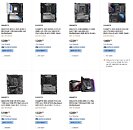
CORSAIR and ORIGIN PC Launch Updated Systems Powered by New 12th Gen Intel Core Processors
CORSAIR, a world leader in enthusiast components for gamers, creators, and PC builders, and ORIGIN PC, a provider of custom PCs for gamers, enthusiasts, and professionals, today announced updated configurations of their award-winning desktop PCs equipped with powerful new 12th Gen Intel Core processors. The CORSAIR VENGEANCE i7300 Series, alongside ORIGIN NEURON, MILLENNIUM, GENESIS, M-Class, and L-Class desktops, are all available with up to an Intel Core i9-12900K processor, supported by an array of award-winning CORSAIR components including newly-released CORSAIR DDR5 memory.
The latest generation of processors from Intel delivers incredible speed and intelligence, enabling impressive gaming, productivity, and content creation. With new performance hybrid architecture that distributes processing power to where you need it most, and compatibility with the new DDR5 memory platform, the CPUs powering every updated CORSAIR and ORIGIN PC system offer unprecedented speed and performance.
The latest generation of processors from Intel delivers incredible speed and intelligence, enabling impressive gaming, productivity, and content creation. With new performance hybrid architecture that distributes processing power to where you need it most, and compatibility with the new DDR5 memory platform, the CPUs powering every updated CORSAIR and ORIGIN PC system offer unprecedented speed and performance.





































































